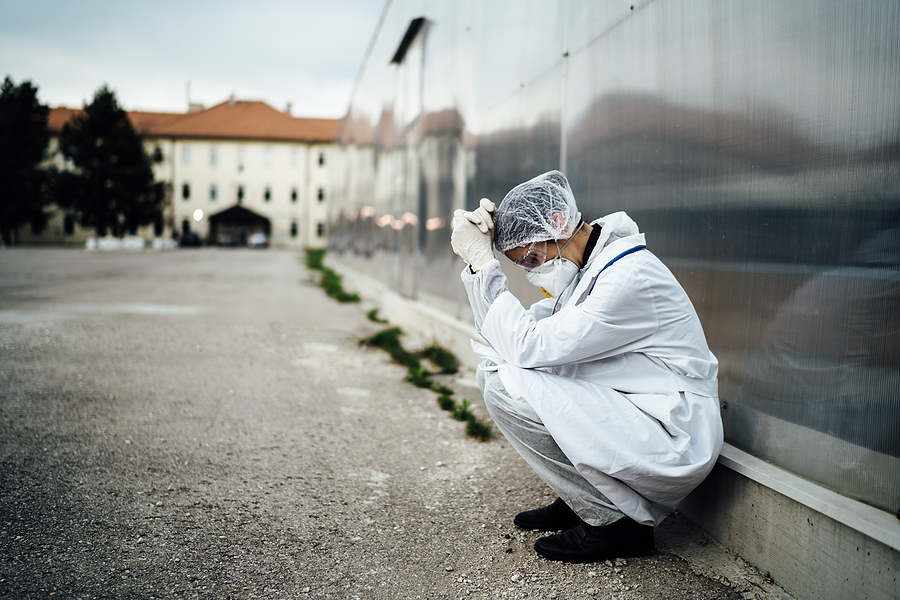How Trauma Affects the Body
Trauma is a serious issue that requires trauma therapy. Before we discuss how trauma affects the body, take a look at these numbers:
- An estimated 90% of adults in the United States have experienced a traumatic event at least once in their lives.
- Eight million people have PTSD at any given time.
- Approximately 7-8% percent of all adults—1 of 13 people in this country—will develop PTSD during their lifetime.
- About 10% of women develop PTSD sometime in their lives compared to 4% of men.
(https://www.ptsd.va.gov/understand/common/common_adults.asp)
What is Trauma?
When it comes to trauma, no two situations are ever the same, but trauma therapy can help.
Trauma can be major life events like being in a combat zone, sexual assault, natural disasters, or more pervasive experiences like a childhood filled with abandonment or chronic rejection.
How Trauma Affects the Body: Initial Reactions to Trauma
How trauma affects the body can include – exhaustion, confusion, sadness, anxiety, agitation, numbness, dissociation, and physical arousal. You might experience a few or all of these symptoms. Increased exhaustion is often the result as the more worried and stressed people are, the more tense and constricted muscles are. Over time the muscles become exhausted and ineffectual. After a traumatic event or repeated trauma, people react differently, experiencing a wide range of physical and emotional reactions. There is no right or wrong way to think, feel, or respond to trauma. It’s traumatic! Everyone will react differently, so don’t judge your reactions or those of other people.
How Trauma Affects the Body: The Physiological Effects of Trauma
In the physiological sense of how trauma affects the body, trauma sensitizes the hypothalamic-pituitary-adrenal (HPA) axis, which is the body’s central stress response system. You can think of this as the juncture of our central nervous system and endocrine system, which makes us more reactive to stress and more likely to increase the stress hormone Cortisol. In certain situations, hormones like Cortisol are crucial. (Cortisol, the primary stress hormone, increases sugars (glucose) in the bloodstream, enhances your brain’s use of glucose, and increases the availability of substances that repair tissues – The Mayoclinic.org
Unfortunately, Cortisol can be toxic when it is chronically high—ultimately leading to increased risks of health conditions such as depression or heart disease.
Remove the stressor, and the body’s hormones should respond in kind. The only problem – Anyone who is exposed to trauma long term will continue to produce these hormones, leading to adverse effects on the body over time. But trauma therapy can help to rebalance this natural reaction to stress.
Additionally, the indirect effects of trauma on the body can be subtle yet dangerous. Often, trauma’s physical and emotional pain can make it hard to cope, leading to unhealthy tendencies like smoking or drinking. Although these can be seemingly effective strategies in the short term, they only numb the emotions and prolong the trauma’s impact on our body and mind. We never learn how to deal with the underlying emotions effectively.
How Trauma Affects the Body: Psychological Effects
Frequently, trauma’s psychological effects are noticed first and can disrupt the individual’s day-to-day life, causing depression, anxiety, anger, intense fear, flashbacks, and paranoia. The traumatic experience could also affect and alter perceptions. This can lead to the belief that the world around them is unsafe and other people are dangerous, or in extreme cases, create altered personalities to help them cope with the trauma. This leads us to PTSD or Post Traumatic Stress Disorder, which is often triggered by witnessing or experiencing a shocking, dangerous or terrifying event, such as being in a combat zone. “However, symptoms may not appear until several months or even years later,” according to the Anxiety and Depression Association of America, and is often illustrated by several leading indicators:
- Re-experiencing the trauma through distressing memories of the event, flashbacks, and nightmares.
- Emotional detachment and avoidance of places, people, and activities are reminders of the trauma.
- Increased arousal, such as difficulty sleeping and concentrating, feeling jumpy, and being easily irritated and angered.
- Adverse changes in thinking and mood.
What are the Best Treatments?
Trauma therapy is the first-line treatment in dealing with PTSD and trauma. Specifically, Cognitive Processing Therapy and Prolonged Exposure are evidence-based treatments to help individuals reduce PTSD symptoms. Research has shown that both treatments can significantly reduce PTSD symptoms after approximately 12 weeks (Lipov & Ritchie, 2015; Navaie, et al, 2014).
Although not everyone who experiences trauma will develop PTSD, everyone who experiences trauma will have had their lives impacted significantly by the events. Yes, there are evidence-based treatments that can help, but sometimes more than the specific treatment, it is the relationship with a trusted provider that can make a big difference. Especially in a world where your trauma told you to think that the world and people are untrustworthy, having a stable, safe therapist can slowly shift towards changing that schema. At COPE, we pride ourselves on providing both a safe space and effective treatments to help you do your work.
Along with the specific treatments discussed above, it is essential to consider daily ways to reduce stress. One way of doing so is through mindfulness techniques. One easy way to employ mindfulness meditations into your day is by downloading an app such as Calm, Insight Timer, Headspace, or Breeth, which will guide you through mindfulness meditations. Doing these exercises every day and sometimes three times a day helps lower your overall physiological arousal and slowly shift to a calmer baseline.
Trauma Therapy
At COPE, we’re trained in these interventions and encourage all prospective patients to contact us to learn more about how trauma affects the body.

